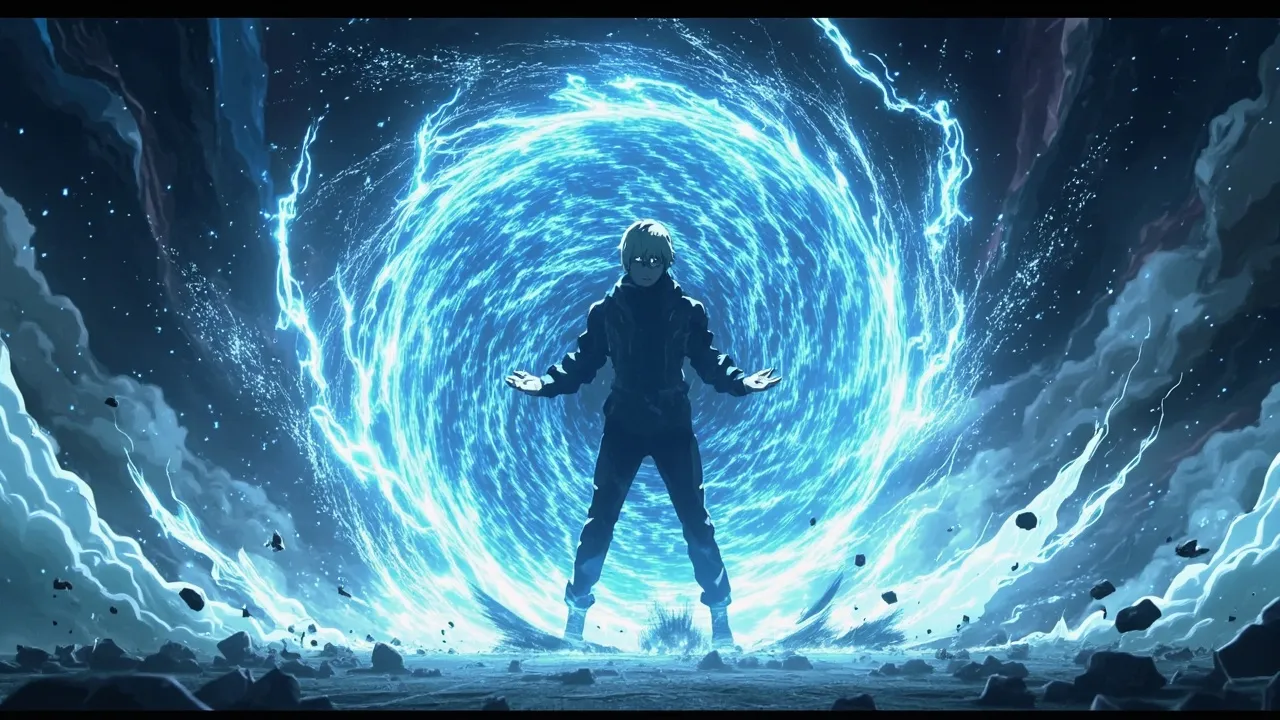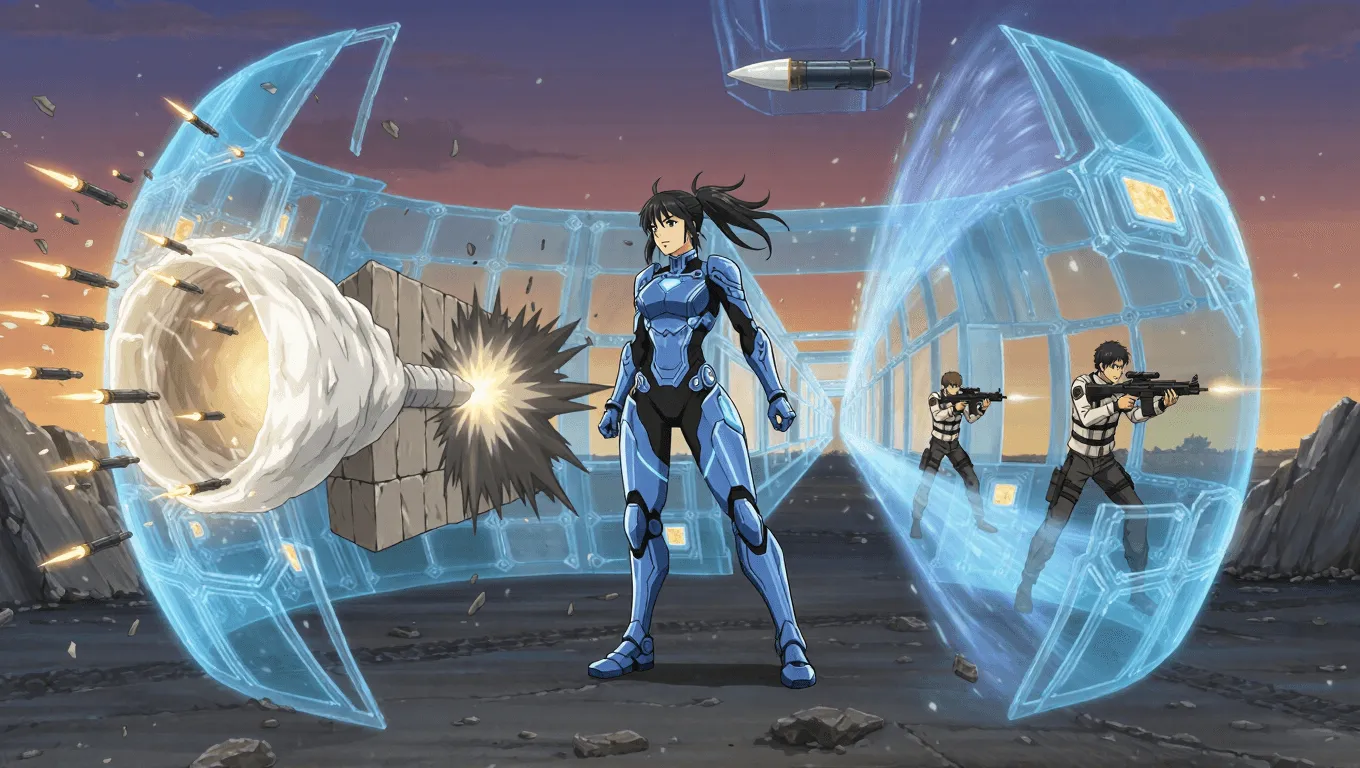Gravity Shield

Gravity Shield Video Demo 🎬
Table of Contents
The Gravity Shield is a defensive superpower that bends local spacetime to create a protective field against physical force, energy, and environmental hazards. By manipulating gravitational vectors, a user can form a gravitic dome, pressure bubble, or layered force field that disperses impacts and redirects momentum. This guide explains how Gravity Shield works, what it can and can’t block, and how it scales across experience levels. For more powers like this, explore the superpower encyclopedia at superpower wiki or try a random pick with random superpower generator.
What Is Gravity Shield
Gravity Shield is the ability to project a localized gravitational field that protects a person, object, or area. Instead of merely “blocking,” it warps trajectories, slows incoming mass, and drains kinetic energy through controlled curvature. At basic tiers it behaves like invisible armor. At advanced tiers it becomes a dynamic, shapeable barrier capable of absorbing concussive blasts, fragmenting projectiles, and nullifying shockwaves by reshaping propagation paths.
Common related terms include gravitational barrier, gravitic dome, kinetic deflection, inertial dampening, antigravity buffering, vector redirection, and impact nullification. Though often grouped with energy shields or traditional force fields, Gravity Shield is distinct because it changes motion through gravity rather than simply resisting it with raw hardness.
Core Abilities of Gravity Shield
Gravitational Barrier Formation
The user generates a semi-rigid field where gravitational gradients oppose incoming movement. Bullets, shrapnel, and charging opponents decelerate as if climbing an extreme gravitational hill, losing momentum before they reach the target.
Kinetic Deflection and Vector Redirection
Instead of stopping a blow head-on, the field tilts or curves the trajectory so impacts glance away. This prevents energy transfer to the protected body and reduces collateral damage behind the defender.
Inertial Dampening
Within the shield, sudden acceleration is softened. Falls feel shorter, collisions become manageable, and internal organs are protected from whiplash. This is vital for high-speed movement or crash survival.
Pressure Gradient Control
Fine control allows the user to shape pressure differentials that cancel blast overpressure and shockwaves. Explosions lose punch as expanding gases are redirected, spread out, or slowed.
Selective Permeability
Advanced users tune the field so that air, light, or allies can pass while hostile mass or high-velocity threats cannot. This enables breathing and communication without sacrificing safety.
Area and Shape Modulation
The Gravity Shield can manifest as a personal bubble, a forward arc, a full dome, or a thin wall. Expert users can contour around crowds, vehicles, or irregular terrain, or create layered shells for redundancy.
Energy Interaction
While the shield primarily acts on mass and momentum, it can indirectly mitigate energy attacks by bending particle streams, dispersing plasma, or lengthening the path photons must travel through curved space (diminishing beam density). Results vary by energy type and user skill.
Mobility and Anchoring
The field can anchor to the ground (resisting knockback) or move with the user, acting like a mobile fortress. With refined technique, it can even surf shockwaves by shaping gradients underneath the user.
Application / Tactical Advantages in Combat
-
Projectile massacre prevention: Bullets, arrows, and micromunitions lose velocity or veer off course before impact.
-
Crowd shielding: A dome protects civilians during evacuations, suppressing debris and falling hazards.
-
Breach control: A forward arc creates a safe corridor against gunfire while a team advances.
-
Blast mitigation: Pressure gradients cancel shockwave peaks, saving structures and eardrums.
-
Melee neutralization: Charging brutes stumble as their momentum bleeds away; grapplers can’t generate leverage.
-
Aerial survivability: Inertial dampening enables safe landings after leaps or midair collisions.
-
Environmental protection: Deflects hail, meteoric fragments, and high-wind debris; reduces radiation dose by lengthening particle paths and forcing scatter (skill dependent).
-
Area denial: By curving trajectories outward, the shield can “shed” attackers to flanks or force them into chokepoints.
-
Covert defense: Invisible, silent fields enable protection without giving away position, unlike bright energy walls.
Level: Level 1 🏙️, Level 2 🌇, Level 3 🌃
Level 1 🏙️ Initiate

Scope: Personal bubble up to a 2–3 meter radius.
Capabilities:
-
Basic gravitic dome blocking low-caliber bullets and thrown objects.
-
Noticeable kinetic deflection against punches and tackles.
-
Short bursts of inertial dampening for landings up to a few stories.
-
Limited duration; strain after sustained hits or continuous fire.
Tactics:
-
Keep the shield compact for strength.
-
Angle the field to deflect rather than stop; conserve stamina.
-
Use cover to avoid concentrated fire that could overwhelm the field.
Training goals:
-
Practice controlled expansion and retraction.
-
Drill selective permeability for airflow and comms.
-
Build endurance for 30–60 seconds of continuous protection.
Level 2 🌇 Adept

Scope: 5–10 meter dome; multiple configurations (bubble, wall, corridor).
Capabilities:
-
Deflects rifle fire and moderate explosives via pressure gradient control.
-
Maintains selective permeability for allies while excluding hostile projectiles.
-
Provides reliable inertial dampening for vehicle collisions and rooftop drops.
-
Can layer two shells for redundancy or staggered failure.
Tactics:
-
Rotate layers so one recharges while the other takes impacts.
-
Sculpt “gutters” to channel debris away from teammates.
-
Pair with ranged allies who can fire through tuned windows.
Training goals:
-
Rapid reconfiguration under stress (bubble → wall → corridor).
-
Multitask: maintain shield while moving and communicating.
-
Energy discipline: avoid over-broad fields that waste power.
Level 3 🌃 Master

Scope: 20+ meter coverage; precise vector editing and field shaping.
Capabilities:
-
Micro-lensing to disperse energy beams; advanced shockwave dispersal neutralizes heavy ordnance.
-
Local antigravity buffering against superhuman strikes, redirecting titanic momentum sideways.
-
Dynamic tessellation: dozens of interlocking tiles that independently flex, creating a self-healing barrier.
-
Emergency micro-singularity pinning (brief and controlled) to “trap” massive threats in a stable null zone, preventing movement without crushing them outright.
Tactics:
-
Use layered honeycomb shells: outer layer for deflection, inner for inertial dampening.
-
Create moving safe corridors through battlefield clutter.
-
Turn enemy strength against them by curving their force into inert paths.
Training goals:
-
Fine-grain vector edits without collateral distortion.
-
Ethical control—avoid unnecessary gravity extremes.
-
Battlefield orchestration across multiple squads.
Limitations of Using the Gravity Shield
-
Energy economy and fatigue
Field generation demands constant focus and metabolic or power expenditure. Overextension leads to collapse or uncontrolled venting of stored momentum. -
Line-of-sight shaping
While gravity permeates matter, accurate shaping typically requires awareness of threats. Blind spots occur if the user is distracted or overwhelmed. -
High-frequency or massless phenomena
Purely massless, coherent energy (certain exotic lasers or force constructs) may bypass or only partially disperse, especially at Level 1. Mitigation relies on path lengthening and scattering, not absolute blocking. -
Residual momentum bleed
If an attack delivers sustained thrust (e.g., tractor beams, continuous flamers with heavy particles), the shield may gradually translate the user or deform unless anchored. -
Environmental distortion
Strong fields can bend light, distort sensors, and affect nearby structures. At high strength, friendly fire accuracy may suffer through refractive warping. -
Complexity under crossfire
Simultaneous multi-vector assaults stress computational focus. Layer management and vector edits become taxing. -
Ethical constraints
Micro-singularity tricks or extreme gradients risk harm to bystanders and the environment. Responsible use limits maximum curvature in populated areas.
Weakness Against What Other Superpowers
-
Phasing and intangibility
Opponents who decouple from normal mass interactions can pass through a Gravity Shield with minimal resistance. -
Dimensional or portal attacks
Teleportation portals or wormholes open behind or inside the shield, bypassing curvature entirely. -
Probability manipulation
If hit probability is skewed (jammed luck), the shield might be perfectly in place yet the “wrong” deflection occurs, causing unintended collateral or self-hits. -
High-coherence energy constructs
Solid-light weapons or pure psionic force may couple weakly to gravity, reducing shield effectiveness until the user employs lensing and dispersion strategies. -
Gravity mastery on offense
A rival who controls gravity offensively can “cancel” or twist the shield’s gradients, creating null zones or reversed vectors that turn protection into vulnerability. -
Sound and vibration specialists
While shockwaves can be dispersed, specialized resonance powers might slip through by vibrating the field structure, causing flicker and timing gaps.
Synergistic Power Combos
-
Telekinesis
Pairing Gravity Shield with telekinetic fine-motor control enables precise projectile redirection and in-field assembly of debris barriers. Telekinesis also stabilizes the user during strong anchoring. -
Energy absorption
While the shield slows and disperses, an absorber harvests what remains. Together they turn enemy fire into fuel. -
Precognition
Foreknowledge of vectors allows pre-curvature tuning—less energy wasted, higher survival odds, and optimal deflection paths that avoid civilian zones. -
Flight or antigravity
Combine inertial dampening with controlled lift for “armored flight.” The shield doubles as aerodynamic shaping, reducing turbulence and protecting wingmen. -
Magnetism or electrokinesis
Magnetic fields gather ferrous projectiles into predictable lanes that the Gravity Shield then curls away, creating elegant debris streams and safe windows for allies. -
Hard-light constructs
Use hard-light as internal scaffolding while the Gravity Shield supplies momentum control; the hybrid becomes extremely resilient against mixed damage types. -
Healing or regeneration
Since the shield minimizes blunt trauma, healers can keep teams in the fight longer without catastrophic injuries.
Known Users
-
A graviton-savvy super-villain and sometime world-threat, known for bending spacetime to form protective domes and reverse the course of battles: Graviton (Franklin Hall).
-
A cosmic tactician who employs controlled gravity corridors for squad protection, popular in space-opera comics and animated adaptations.
-
A futuristic guardian in armored exosuit whose onboard field projectors generate inertial dampening bubbles for civilians during evacuations.
-
A mythic defender from a sci-fantasy realm who shapes gravity sigils into layered wards, deflecting siege rocks and dragonfire alike.
For readers exploring related abilities, browse the full catalog at superpower wiki or discover a fresh idea with the random superpower generator.
